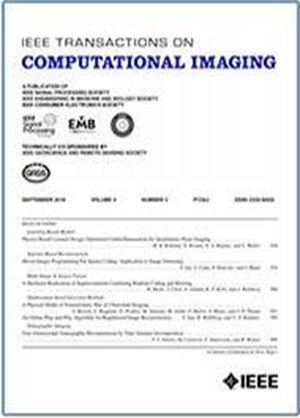A Physics-Inspired Deep Learning Framework With Polar Coordinate Attention for Ptychographic Imaging
IF 4.8
2区 计算机科学
Q2 ENGINEERING, ELECTRICAL & ELECTRONIC
引用次数: 0
Abstract
Ptychographic imaging confronts inherent challenges in applying deep learning for phase retrieval from diffraction patterns. Conventional neural architectures, both convolutional neural networks and Transformer-based methods, are optimized for natural images with Euclidean spatial neighborhood-based inductive biases that exhibit geometric mismatch with the concentric coherent patterns characteristic of diffraction data in reciprocal space. In this paper, we present PPN, a physics-inspired deep learning network with Polar Coordinate Attention (PoCA) for ptychographic imaging, that aligns neural inductive biases with diffraction physics through a dual-branch architecture separating local feature extraction from non-local coherence modeling. It consists of a PoCA mechanism that replaces Euclidean spatial priors with physically consistent radial-angular correlations. PPN outperforms existing end-to-end models, with spectral and spatial analysis confirming its greater preservation of high-frequency details. Notably, PPN maintains robust performance compared to iterative methods even at low overlap ratios — well-suited for high-throughput imaging in real-world acquisition scenarios for samples with consistent structural characteristics.基于极坐标关注的物理启发深度学习框架
平面成像在应用深度学习从衍射图样中提取相位时面临着固有的挑战。传统的神经网络架构,包括卷积神经网络和基于变压器的方法,都是针对自然图像进行优化的,这些图像具有基于欧几里得空间邻域的归纳偏差,在互易空间中与衍射数据的同心相干模式特征表现出几何不匹配。在本文中,我们提出了PPN,这是一种物理启发的深度学习网络,具有极坐标注意(PoCA),用于平面成像,它通过双分支架构将局部特征提取与非局部相干建模分离开来,将神经归纳偏差与衍射物理相结合。它由一个PoCA机制组成,该机制用物理上一致的径向角相关性取代欧几里德空间先验。PPN优于现有的端到端模型,其频谱和空间分析证实其更能保存高频细节。值得注意的是,与迭代方法相比,PPN即使在低重叠比下也保持了强大的性能,非常适合在具有一致结构特征的样品的实际采集场景中进行高通量成像。
本文章由计算机程序翻译,如有差异,请以英文原文为准。
求助全文
约1分钟内获得全文
求助全文
来源期刊

IEEE Transactions on Computational Imaging
Mathematics-Computational Mathematics
CiteScore
8.20
自引率
7.40%
发文量
59
期刊介绍:
The IEEE Transactions on Computational Imaging will publish articles where computation plays an integral role in the image formation process. Papers will cover all areas of computational imaging ranging from fundamental theoretical methods to the latest innovative computational imaging system designs. Topics of interest will include advanced algorithms and mathematical techniques, model-based data inversion, methods for image and signal recovery from sparse and incomplete data, techniques for non-traditional sensing of image data, methods for dynamic information acquisition and extraction from imaging sensors, software and hardware for efficient computation in imaging systems, and highly novel imaging system design.
 求助内容:
求助内容: 应助结果提醒方式:
应助结果提醒方式:


